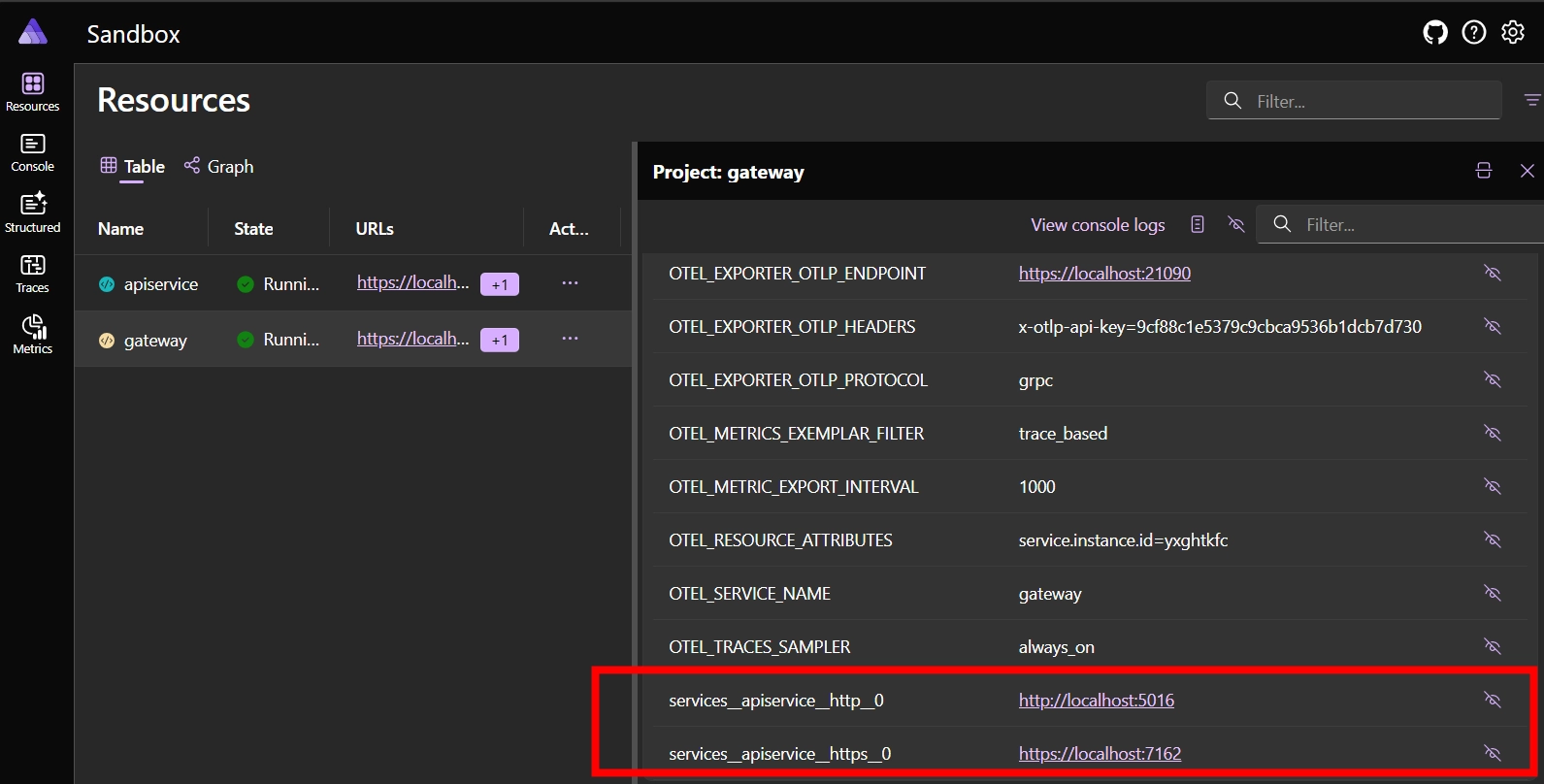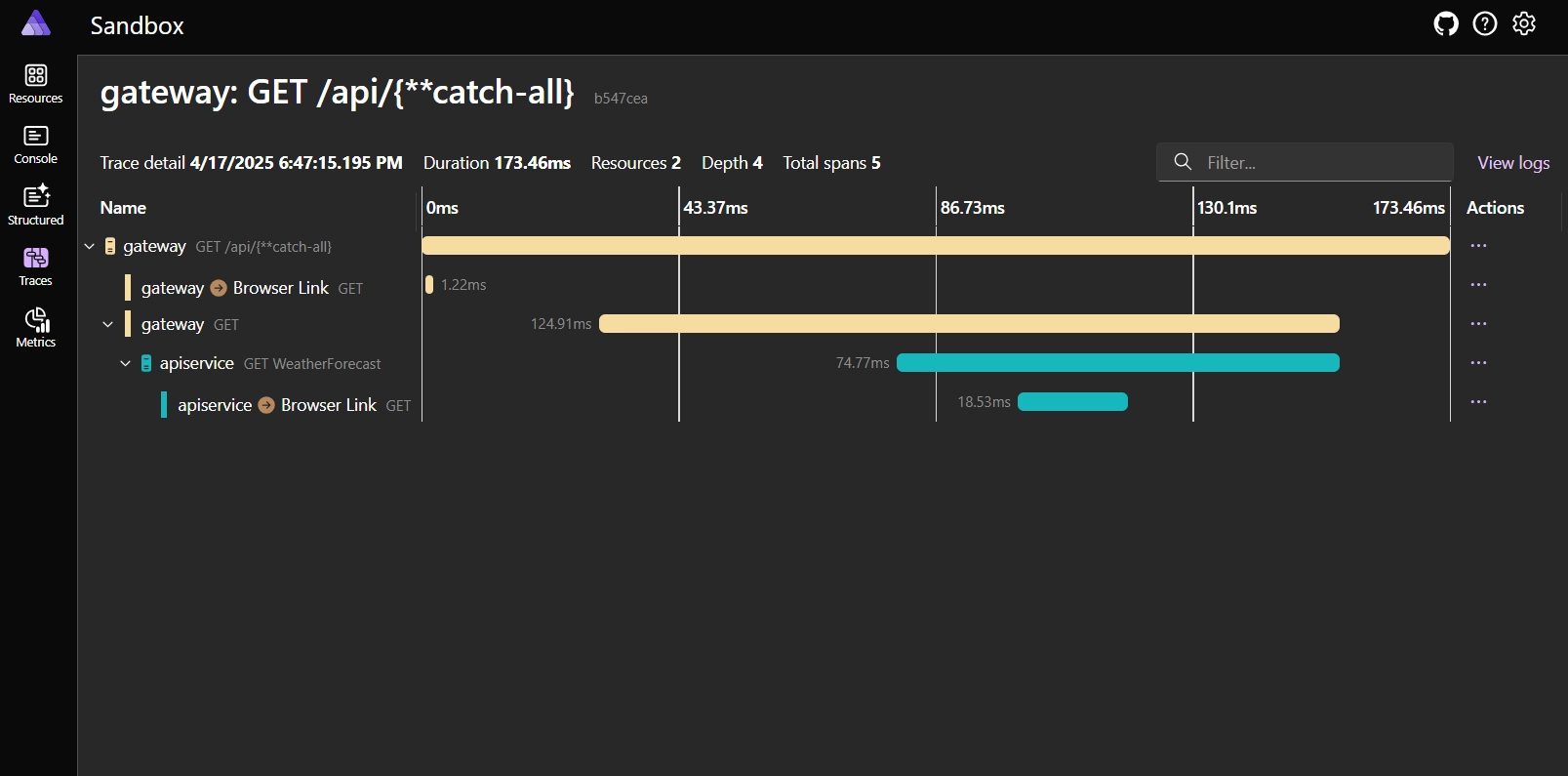Using YARP as BFF within .NET Aspire: Integrating YARP into .NET Aspire


Series: Building a secure application (1/4)
- Using YARP as BFF within .NET Aspire: Integrating YARP into .NET Aspire
- Secure your Yarp BFF with cookie-based authentication
- Forwarding authenticated calls to a downstream API using YARP
- Using cookies for authentication in an Angular application
More projects are moving towards the Backend for Frontend (BFF) pattern to provide a more tailored and efficient interaction between a frontend application (e.g. an Angular application) and its backend services (e.g. a .NET WebAPI). This pattern has a couple of benefits:
- No more irritating CORS issues when calling APIs from the frontend.
- Improved security by not storing user and application secrets in the frontend code.
- A simplified authentication process for the frontend, as the BFF can handle authentication and authorization on behalf of the frontend application.
- The applications' performance increases as the BFF can aggregate multiple backend services into a single API endpoint, reducing the number of network calls from the frontend.
To build the BFF, we can use YARP (Yet Another Reverse Proxy), which is a reverse proxy library for ASP.NET Core. YARP allows you to create a reverse proxy server to route requests to different backend services based on the request URL or other criteria.
YARP is also available as a Docker container (in preview).
In this article, we're going to explore how to create and integrate YARP within .NET Aspire. The YARP project is going to act as a secure BFF, and will play the role of a traffic controller between the frontend (this will be added in a future post) and the backend services.
Prerequisites link
I assume there's already a working .NET Aspire project, which contains a WebAPI project. If you need help setting up a new .NET Aspire project, please refer to the Getting Started with .NET Aspire documentation.
You should end up with a solution, in which a WebAPI project is added to the Aspire AppHost.
In the example below the WebAPI project is referred to as apiservice.
Add a new YARP project link
The first step is to create a new YARP project within the existing solution.
Because there's no template for YARP, create a new Empty ASP.NET Core Web API project, I named mine Gateway.
If you're Visual Studio make sure that the "Enlist in Aspire orchestration" checkbox is checked (checked by default) in the wizard, so that the new project is added to the existing solution. This will automatically register the new project in the Aspire AppHost, and it will be available for orchestration.
You can also do this manually by adding a project reference from the AppHost project to the new Gateway project, and registering the project to Aspire.
To verify that the project is registered correctly, run the AppHost project and check the Aspire Dashboard.
Using the graph view, you should see the apiservice and gateway projects connected to each other.
To view the dashboard, run the AppHost project.

The newly created Gateway project should be empty for now, with the exception of adding Aspire's service defaults. This is going to be important later on because it adds service discovery functionality. It adds more than this, such as configuring OpenTelemetry, but that's not the focus of this article.
Install YARP Packages link
After the project is created, add the Yarp.ReverseProxy and Microsoft.Extensions.ServiceDiscovery.Yarp NuGet packages.
When the packages are installed, update the Program file to add and use YARP:
Reference the API to the Gateway link
With YARP we want to redirect incoming requests to the apiservice API, but we don't want to maintain each API's URL in the YARP project.
While this doesn't seem like a big deal for now with only one API, it can become a real burden when the number of APIs increases, or when it's going to be released.
That's where the Aspire can help us. Aspire is responsible for orchestrating the different projects in the solution, and it can manage the dependencies effectively.
With Aspire we can "link" projects together, in our case the gateway (YARP) needs to be aware of the apiservice WebAPI project.
To achieve this, we can use the WithReference method to add a reference to the apiservice project from the gateway project.
We're not there yet, but in the end we want to keep our internals safe and hidden from the outside world (when the project is deployed).
The only resource that should be exposed to the outside world is the gateway project, all the traffic should go through it.
That's why the code above marks the gateway project as an external resource with the WithExternalHttpEndpoints method.
By creating this reference between the gateway and apiservice projects, the apiservice address is registered as an environment variable in the gateway project.
This is visible within the Aspire Dashboard:

Configure YARP link
YARP is configured by providing a set of routes and clusters in the appsettings.json file.
This can also be done via code, but I personally find it easier to use the JSON configuration.
The routes define how requests are matched and routed to the appropriate backend services, while the clusters define the backend services themselves.
In the configuration below, we define a route that matches requests to /api/{**catch-all} and routes them to a cluster named apiservice.
The cluster contains a single destination, which is the address of the backend service.
This means that any requests to /api is going to be forwarded to the apiservice backend service.
Please notice that the address of the backend service is not set to a specific URL.
Instead, it's set to http://apiservice, which is the name we gave to the WebAPI project while registering it in the Aspire AppHost.
You can also see that the YARP configuration includes a transform that removes the /api prefix from the request path before forwarding it to the backend service.
I'm doing this because the WebAPI project doesn't make use of the /api prefix in its routes.
I like to add a prefix to the routes in the YARP project, so that I can easily distinguish the routes, and avoid any conflicts with any duplicate routes when more projects are added.
Lastly, the YARP configuration can be loaded from the appsettings.json file by using the LoadFromConfig method in the Program.cs file.
To try this out, run the AppHost project and navigate to the gateway URL in your browser, and append https://{gateway:portnumber}/api/weatherforecast to the URL.
We expect to see the weather forecast data returned from the apiservice, because our request is being routed through the gateway project, to https://{apiservice:portnumber}/weatherforecast.
But this isn't the case.
If we take a look at the error, which is available in the Aspire logs, we can see that the YARP project is unable to resolve the apiservice address.
We get the following error:
Service discovery link
This happens because the apiservice is not discovered correctly, and thus isn't using the correct address.
To resolve this, invoke the AddServiceDiscoveryDestinationResolver (coming from the Microsoft.Extensions.ServiceDiscovery.Yarp NuGet package) method in the Program.cs file of the YARP project.
With this change, the YARP project is able to resolve the apiservice address correctly, to the correct route https://{apiservice:portnumber}.
In my case it routes https://localhost:7146/api/weatherforecast to https://localhost:7162/weatherforecast.
You can follow this request within the Aspire Dashboard, by looking at the trace view. Resulting in the trace trail:
- the initiator of the request, which is a navigation to the
/api/weatherforecastendpoint; - YARP is handling the incoming request;
- YARP is forwarding the request to the
apiservice; - The
apiservicereturning a successful response;

Conclusion link
In this article, we explored how to integrate YARP within a .NET Aspire project. We used Aspire's service discovery to automatically resolve the backend service address without hardcoding URLs in the YARP configuration.
In the next blog posts, we will explore how to add authentication to the YARP project to secure the API endpoints. We will also add an Angular frontend project to the solution, and configure it to use the YARP project as a BFF.
If you can't wait, check out my Sandbox for the complete code.
Incoming links
Feel free to update this blog post on GitHub, thanks in advance!
Join My Newsletter (WIP)
Join my weekly newsletter to receive my latest blog posts and bits, directly in your inbox.
Support me
I appreciate it if you would support me if have you enjoyed this post and found it useful, thank you in advance.
